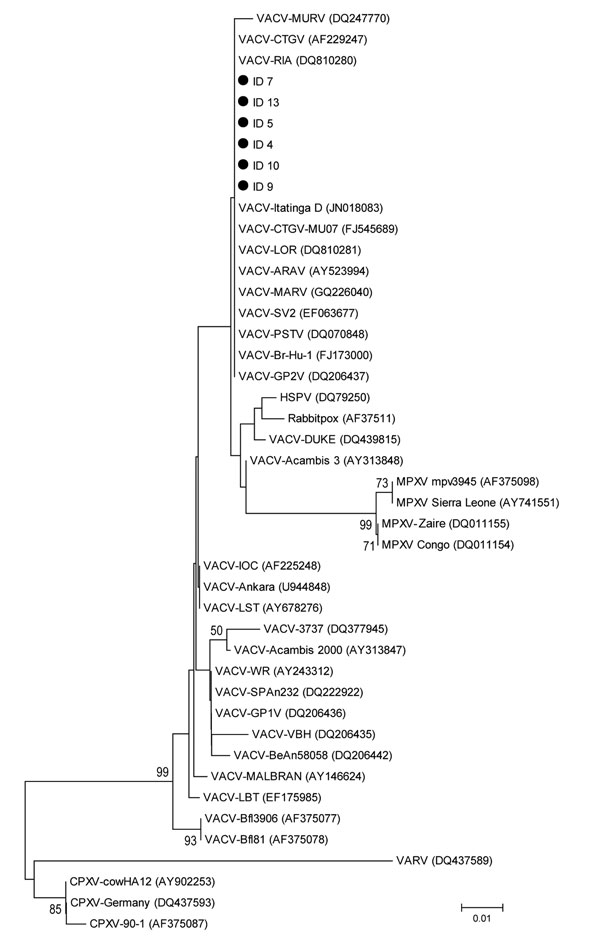Volume 22, Number 2—February 2016
Dispatch
Dogs and Opossums Positive for Vaccinia Virus during Outbreak Affecting Cattle and Humans, São Paulo State, Brazil
Figure 2

Figure 2. Phylogenetic tree of A56R genes of orthopoxviruses, São Paulo State, Brazil. Tree was constructed by using the neighbor-joining method, the Tamura-3 model of nucleotide substitutions, and 1,000 bootstrap replicates in MEGA 4.0 (http://www.megasoftware.net/mega4/mega.html). Black circles indicate group 1 vaccinia virus (VACV) isolates from this study. Numbers along branches are bootstrap values. ID 5 (KJ741390.1), ID 7 (KJ741391.1), and ID 13 (KJ741392.1) are from opossum (Didelphis albiventris) blood samples; ID 5 and ID 7 are from the first farm sampled; ID 13 is from the second farm sampled; ID 4 (KJ741387.1), ID 9 (KJ741388.1), and ID 10 (KJ741389.1) are from canine blood samples; and ID 4, ID 9, and ID 10 are from the first farm sampled. MURV, Muriaé virus; CTGV, Cantagalo virus; ARAV, Araçatuba bat virus; MARV, Mariana virus; PSTV, Passatempo virus; GP2V, Guarani P2 vaccinia virus; HSPV, horsepox virus; MPXV, monkeypox virus; VARV, variola virus; CPXV, cowpox virus. Scale bar indicates nucleotide substitutions per site.